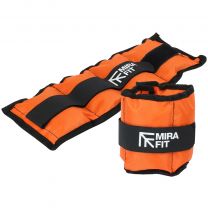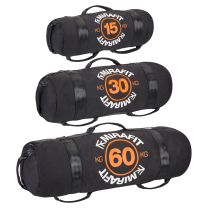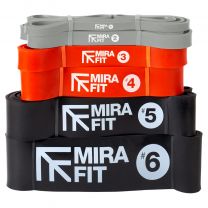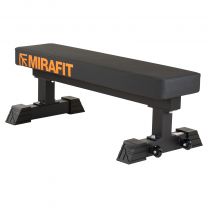Ultimate Hiking Workout: 10 Best Training Exercises For Hiking
Ultimate Hiking Workout: 10 Best Training Exercises For Hiking

Hill sprints, day hikes, trail running and week-long treks. Doing anything that requires heading up a hill is never going to be easy.
However, adding in steep inclines to your endurance training is one of the best ways to get fit.
Not only can you take in some fantastic views when you finally reach the top, but the strengthening and cardio progression you make along the way, can have an incredible impact on your overall fitness – never mind your VO2 max score.
This sort of training can benefit so many different types of approaches too. It’s great for building strength and power in runners, improving endurance in weightlifters and excellent for torching fat too.
Outside of your training, taking on hiking challenges is great for giving you something to aim for, not to mention really rewarding when it’s all done.
Inspired by Mirafit’s Louis Simms and his incredible Three Peaks accomplishment, we’ve put together some massively beneficial exercises you can do – either as part of your training, or to help you prepare for your next uphill challenge.
10 BEST TRAINING EXERCISES FOR HIKING
1 - LUNGES
Uphill work is always going to be taxing on your quads, which is why lunges will really benefit you in the long run. Not only do they isolate each leg so you can work them individually, but they’re ideal for intensifying your lower body workout.
Lunges target your hamstrings too which will really help with both your levels of push and power.
Pro tip - Alternating plyometric lunges are a great way to improve strength and explosivity. Add in a Sandbag to maximise your cardio training.
2 - SQUATS
A fantastic compound exercise that targets your posterior chain. Squats will encourage all-over muscle growth and are a great way to train heavy.
Having the barbell across your shoulders will also help your back get used to carrying weight in preparation for your hiking bag.
Pro tip - Vary your workout with both front and back bar squats, so that you train both your hamstrings and your quads for going up and down hill.
3 - POOR MAN’S LEG CURL
Grab a Flat Weight Bench and lie on the ground, parallel to the bench. Put your feet up on the bench so your knees are bent at a 90-degree angle. Lift one leg off the bench slightly, and with the other, push your hips upwards into a glute bridge. Hold and then bring back down.
These are really beneficial for your hamstrings and are brilliant for building strength in hard-to-train areas.
Pro tip - add in a barbell or Padded Body Bar across your hips to intensify your workout and maximise your gains.
4 - DEADLIFTS
Done correctly, deadlifts are ideal for releasing the muscle potential in your posterior chain. They’re a great way to train your hamstrings and lower back. And they’re also really beneficial for steep gradients, as they’ll help you maintain your balance.
Pro tip - Once you are happy with your deadlift form and technique, practise pause deadlifts where you pause while in the lowest position after initially lifting up the bar. This will help build strength in your hamstrings, as well as prevent injuries.
5 - HILL SPRINTS
Never forget the amount of cardio training you’ll need to include in your training before you take on an uphill challenge such as The Three Peaks. Hill sprints are massively beneficial and will really help your body get used to working out on a steep incline.
If you’re just starting out, you may need to build up to how many hill sprints you can do.
Pro tip - Whether you sprint, lunge or walk, add in a weight to get your muscles in good working, uphill order. Sandbags and Ankle Weights are great for this.
6 - LANDMINE EXERCISES
Landmine Handles are really versatile pieces of kit. Plus we have a wide range of post and handles that you can get to vary your workout.
The key factor being that landmines get your whole body working while engaging your stabilising muscles – which are vital for balance and endurance while on the slopes.
Squat, press, curl and rotate to target everything you need for gradient work.
Pro tip - Emphasise your rotational strength work by doing plenty of axe chops to target your obliques.
7 - VERTICAL PLATE PRESS
Not only is ab work going to help you get ripped, but it’s also going to help you maintain your balance while out on the hills. And if you’re going to be carrying a heavy hiking bag as well, having a strong core will really help to reduce any muscle aches in your lower back.
The vertical plate press involves you lying down on the ground with your knees up in a table top position, 90-degrees to your body. Hold a weight plate up directly above your chest, and push your body upwards and off the floor, while keeping your legs steady in the same position.
Pro tip - Start out with a lower weight and build as you go to help strengthen and build muscle across your abs. If you prefer, you can swap out the weight plate for a sandbag.
8 - BAND WALKS
Resistance bands are massively underestimated in how much they can help you with your training. Their progressive force means they can help you push through your one-rep max at the squat rack, as well as rehabilitate old injuries.
Grab a Resistance Band and double it over. Place over your ankles and squat down. Walk from side to side maintaining tension in the band.
This exercise is great for your hips and lower body which are all vital for hiking and hill sprints.
Pro tip - Resistance bands are also great for training up your hamstrings. Knot one of the larger bands around your power rack (level 6 is a good choice) and stand in the loop. Squat back to train your lower body and core.
9 - PULL UPS
Having a strong back is going to really help you carry a heavy load while on the hills as well as keep you upright and strong for a long period of time.
And when a lot of us spend so much of our working day sat down at a desk, we can forget just how much of a strain it is on our muscles to spend extended periods of time stood up.
Pull ups are fantastic compound exercises and are ideal for training your back and shoulders – as well as your biceps.
There are lots of different types you can do too. If you’re a beginner, check out our blog on how to do a chin up for all the information you need.
Pro tip - if you haven’t yet built up the strength to do a pull up, add in a resistance band to get you started. Loop one over your Pull Up Bar and either put both or one knee into the band to support your weight as you train.
10 - BOX JUMPS
Getting some power behind your uphill climb is going to really benefit you in the long run. Plyometric exercises are ideal for helping you to be more explosive in your training. They’re great for getting your heart rate up, as well as melting fat too.
Mirafit 3 in 1 Soft Plyo Jump Boxes are really versatile and a great home gym item.
Pro tip - Use the plyo box to do lunges and step ups on too to make sure you don’t end up with any strength imbalances in your lower body.
And to finish off your training, remember to stretch and use a Foam Roller regularly. Doing this will help your muscles repair as well as keep them supple.
For more content, follow us on Instagram, YouTube, TikTok, and on our official Mirafit Facebook page.
Enter your email to signup to our newsletter








